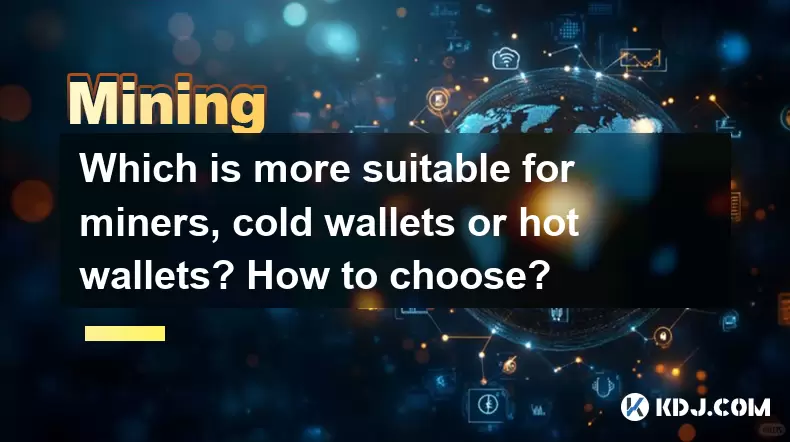-
 Bitcoin
Bitcoin $118300
-0.58% -
 Ethereum
Ethereum $3825
0.11% -
 XRP
XRP $3.137
-0.71% -
 Tether USDt
Tether USDt $0.9999
-0.01% -
 BNB
BNB $803.9
-3.37% -
 Solana
Solana $181.5
-1.94% -
 USDC
USDC $0.9999
0.01% -
 Dogecoin
Dogecoin $0.2238
-2.51% -
 TRON
TRON $0.3358
2.12% -
 Cardano
Cardano $0.7844
-2.16% -
 Hyperliquid
Hyperliquid $43.31
-1.48% -
 Sui
Sui $3.807
-4.04% -
 Stellar
Stellar $0.4203
-1.96% -
 Chainlink
Chainlink $17.79
-3.00% -
 Bitcoin Cash
Bitcoin Cash $567.8
-1.34% -
 Hedera
Hedera $0.2614
-4.30% -
 Avalanche
Avalanche $24.19
-4.46% -
 Litecoin
Litecoin $109.2
-0.74% -
 UNUS SED LEO
UNUS SED LEO $8.969
-0.01% -
 Toncoin
Toncoin $3.404
3.97% -
 Ethena USDe
Ethena USDe $1.001
-0.01% -
 Shiba Inu
Shiba Inu $0.00001307
-3.19% -
 Uniswap
Uniswap $10.33
-1.23% -
 Polkadot
Polkadot $3.884
-4.06% -
 Monero
Monero $312.9
-1.87% -
 Dai
Dai $1.000
0.01% -
 Bitget Token
Bitget Token $4.537
-2.24% -
 Pepe
Pepe $0.00001156
-3.40% -
 Cronos
Cronos $0.1437
-0.89% -
 Aave
Aave $282.8
-2.77%
Which is more suitable for miners, cold wallets or hot wallets? How to choose?
Miners should use cold wallets for secure, long-term storage of their crypto earnings and hot wallets for daily transactions to balance security and convenience.
May 15, 2025 at 12:01 pm

When it comes to miners in the cryptocurrency world, the choice between cold wallets and hot wallets is crucial for securing their earnings. Cold wallets and hot wallets serve different purposes and understanding their differences is essential for miners looking to protect their assets effectively. In this article, we will explore the characteristics of both types of wallets, discuss their suitability for miners, and provide a detailed guide on how to choose the right one.
Understanding Cold Wallets
Cold wallets are offline storage devices that keep your cryptocurrency safe from online threats. They are not connected to the internet, which significantly reduces the risk of hacking and unauthorized access. Common types of cold wallets include hardware wallets and paper wallets.
- Hardware Wallets: These are physical devices that store your private keys offline. Popular hardware wallets include Ledger and Trezor. They are user-friendly and provide a high level of security.
- Paper Wallets: These involve printing out your private and public keys on a piece of paper. While they are cost-effective, they can be less secure if not stored properly.
For miners, cold wallets offer the highest level of security for long-term storage of their cryptocurrency earnings. Since miners often accumulate significant amounts of cryptocurrency over time, using a cold wallet ensures that their assets are protected from online threats.
Understanding Hot Wallets
Hot wallets are connected to the internet, making them more convenient for frequent transactions. They are typically software-based and can be accessed through web browsers, mobile apps, or desktop applications. Examples include Coinbase, Binance, and MetaMask.
- Web Wallets: These are hosted on a third-party website and can be accessed from any device with an internet connection.
- Mobile Wallets: These are apps that you can download on your smartphone, providing easy access to your funds on the go.
- Desktop Wallets: These are installed on your computer and offer a balance between security and convenience.
For miners, hot wallets are useful for managing day-to-day transactions and quickly converting mined cryptocurrency into other assets. However, they come with a higher risk of being hacked due to their online nature.
Suitability for Miners: Cold Wallets
Miners often face the challenge of securing large amounts of cryptocurrency. Cold wallets are particularly suitable for miners due to their high security. Here’s why:
- Security: Since cold wallets are offline, they are immune to online hacking attempts. This makes them ideal for storing large amounts of cryptocurrency safely.
- Long-term Storage: Miners who want to hold onto their earnings for an extended period will find cold wallets to be the best choice. They can store their cryptocurrency securely without worrying about online threats.
- Control: Cold wallets give miners full control over their private keys, reducing the risk of third-party interference.
To set up a cold wallet, miners can follow these steps:
- Choose a Hardware Wallet: Select a reputable hardware wallet like Ledger or Trezor.
- Purchase the Wallet: Buy the wallet from the manufacturer’s official website or an authorized reseller.
- Set Up the Wallet: Follow the manufacturer’s instructions to set up the wallet. This usually involves connecting the device to your computer and initializing it with a new seed phrase.
- Transfer Funds: Once the wallet is set up, you can transfer your mined cryptocurrency to the wallet’s address.
Suitability for Miners: Hot Wallets
While cold wallets are ideal for long-term storage, hot wallets are more suitable for miners who need to manage their cryptocurrency frequently. Here’s why:
- Convenience: Hot wallets allow miners to quickly access and transfer their cryptocurrency. This is particularly useful for those who need to convert their mined assets into other cryptocurrencies or fiat currency.
- Accessibility: Miners can access their hot wallets from any device with an internet connection, making it easier to manage their funds on the go.
- Transaction Speed: Hot wallets enable faster transactions compared to cold wallets, which is beneficial for miners who need to move their assets quickly.
To set up a hot wallet, miners can follow these steps:
- Choose a Hot Wallet: Select a reputable hot wallet service like Coinbase or Binance.
- Sign Up: Create an account on the chosen platform by providing the necessary information and completing the verification process.
- Download the App: If you choose a mobile wallet, download the app from the official app store.
- Set Up the Wallet: Follow the platform’s instructions to set up the wallet. This usually involves creating a new wallet address and securing it with a password.
- Transfer Funds: Once the wallet is set up, you can transfer your mined cryptocurrency to the wallet’s address.
How to Choose the Right Wallet for Miners
Choosing the right wallet depends on the miner's specific needs and circumstances. Here are some factors to consider:
- Security Needs: If security is the top priority, especially for long-term storage, miners should opt for a cold wallet. For miners who need to manage their funds frequently, a hot wallet might be more suitable.
- Frequency of Transactions: Miners who need to make frequent transactions should consider using a hot wallet for its convenience and speed. For less frequent transactions, a cold wallet can be used.
- Amount of Cryptocurrency: Miners with large amounts of cryptocurrency should use cold wallets for their enhanced security. For smaller amounts that need to be managed frequently, a hot wallet is more practical.
- Accessibility: If miners need to access their funds from multiple devices or locations, a hot wallet is more convenient. Cold wallets are better for those who can manage their funds from a single, secure location.
Balancing Cold and Hot Wallets
Many miners find that a combination of both cold and hot wallets offers the best of both worlds. Here’s how miners can balance their use:
- Use Cold Wallets for Long-term Storage: Transfer the majority of your mined cryptocurrency to a cold wallet for secure, long-term storage.
- Use Hot Wallets for Daily Transactions: Keep a smaller amount of cryptocurrency in a hot wallet for daily transactions and quick conversions.
- Regularly Transfer Funds: Periodically transfer funds from your hot wallet to your cold wallet to minimize the risk of losing your entire earnings to a hack.
By using both types of wallets, miners can enjoy the security of cold wallets while still benefiting from the convenience of hot wallets.
Frequently Asked Questions
Q: Can miners use both cold and hot wallets simultaneously?
A: Yes, miners can use both cold and hot wallets at the same time. This approach allows them to store the majority of their earnings securely in a cold wallet while keeping a smaller amount in a hot wallet for daily transactions.
Q: How often should miners transfer funds from their hot wallet to their cold wallet?
A: The frequency of transfers depends on the miner's transaction needs and risk tolerance. A common practice is to transfer funds to a cold wallet weekly or monthly, depending on the amount of cryptocurrency being mined and managed.
Q: Are there any risks associated with using cold wallets?
A: While cold wallets are highly secure, they are not without risks. Physical loss or damage to the device can result in the loss of funds. Additionally, if the seed phrase is not stored securely, it could be compromised. Miners should take extra precautions to safeguard their cold wallets and backup their seed phrases.
Q: Can miners recover their funds if they lose access to their cold wallet?
A: Yes, miners can recover their funds if they lose access to their cold wallet, provided they have securely stored their seed phrase. By using the seed phrase, they can restore their wallet on a new device and regain access to their funds. It's crucial for miners to keep their seed phrases in a safe and secure location.
Disclaimer:info@kdj.com
The information provided is not trading advice. kdj.com does not assume any responsibility for any investments made based on the information provided in this article. Cryptocurrencies are highly volatile and it is highly recommended that you invest with caution after thorough research!
If you believe that the content used on this website infringes your copyright, please contact us immediately (info@kdj.com) and we will delete it promptly.
- Dalio's Take: Balancing Bitcoin, Gold, and the Debt Doom Loop
- 2025-07-31 00:51:15
- Ethereum's Epic Rally: A Decade of Decentralization and a Celebration in NFTs
- 2025-07-31 01:11:05
- XRP Price, Altcoins, and the 50x Potential: What's the Buzz?
- 2025-07-31 01:15:14
- BlockchainFX ($BFX): Is This Altcoin the Best Crypto Presale of 2025?
- 2025-07-31 01:21:27
- PENGU Price Plunge? Binance Transfers and Token Transfer Trends
- 2025-07-30 23:10:15
- Navigating Crypto Investment: Bitcoin Mining and the Rise of Cloud Mining in the Big Apple
- 2025-07-30 22:31:15
Related knowledge

What was the highest APY for IRON mining?
Jul 23,2025 at 05:14am
Understanding IRON Token and Its Mining MechanismThe IRON token is a stablecoin that operates within the Iron Finance ecosystem, primarily on blockcha...

What is impermanent loss in IRON pools?
Jul 23,2025 at 09:00am
Understanding Impermanent Loss in the Context of IRON PoolsImpermanent loss is a phenomenon that affects liquidity providers in decentralized finance ...

How to claim rewards from IRON mining?
Jul 23,2025 at 02:21pm
Understanding IRON Mining and Reward MechanismsIRON Finance operated as a decentralized finance (DeFi) protocol on the Polygon and Binance Smart Chain...

How to claim rewards from IRON mining?
Jul 29,2025 at 05:07am
Understanding IRON Mining and Reward MechanismIRON is a dual-token system designed to stabilize the value of a synthetic asset through a combination o...

IRON mining tutorial for beginners
Jul 27,2025 at 12:01am
What Is IRON and How Does It Work in the Cryptocurrency Ecosystem?IRON is a cryptocurrency token that operates on the Binance Smart Chain (BSC) and is...

How to calculate APY for IRON mining?
Jul 28,2025 at 09:49am
Understanding APY in the Context of IRON Token MiningWhen engaging in IRON token mining within decentralized finance (DeFi) platforms, Annual Percenta...

What was the highest APY for IRON mining?
Jul 23,2025 at 05:14am
Understanding IRON Token and Its Mining MechanismThe IRON token is a stablecoin that operates within the Iron Finance ecosystem, primarily on blockcha...

What is impermanent loss in IRON pools?
Jul 23,2025 at 09:00am
Understanding Impermanent Loss in the Context of IRON PoolsImpermanent loss is a phenomenon that affects liquidity providers in decentralized finance ...

How to claim rewards from IRON mining?
Jul 23,2025 at 02:21pm
Understanding IRON Mining and Reward MechanismsIRON Finance operated as a decentralized finance (DeFi) protocol on the Polygon and Binance Smart Chain...

How to claim rewards from IRON mining?
Jul 29,2025 at 05:07am
Understanding IRON Mining and Reward MechanismIRON is a dual-token system designed to stabilize the value of a synthetic asset through a combination o...

IRON mining tutorial for beginners
Jul 27,2025 at 12:01am
What Is IRON and How Does It Work in the Cryptocurrency Ecosystem?IRON is a cryptocurrency token that operates on the Binance Smart Chain (BSC) and is...

How to calculate APY for IRON mining?
Jul 28,2025 at 09:49am
Understanding APY in the Context of IRON Token MiningWhen engaging in IRON token mining within decentralized finance (DeFi) platforms, Annual Percenta...
See all articles

























































































